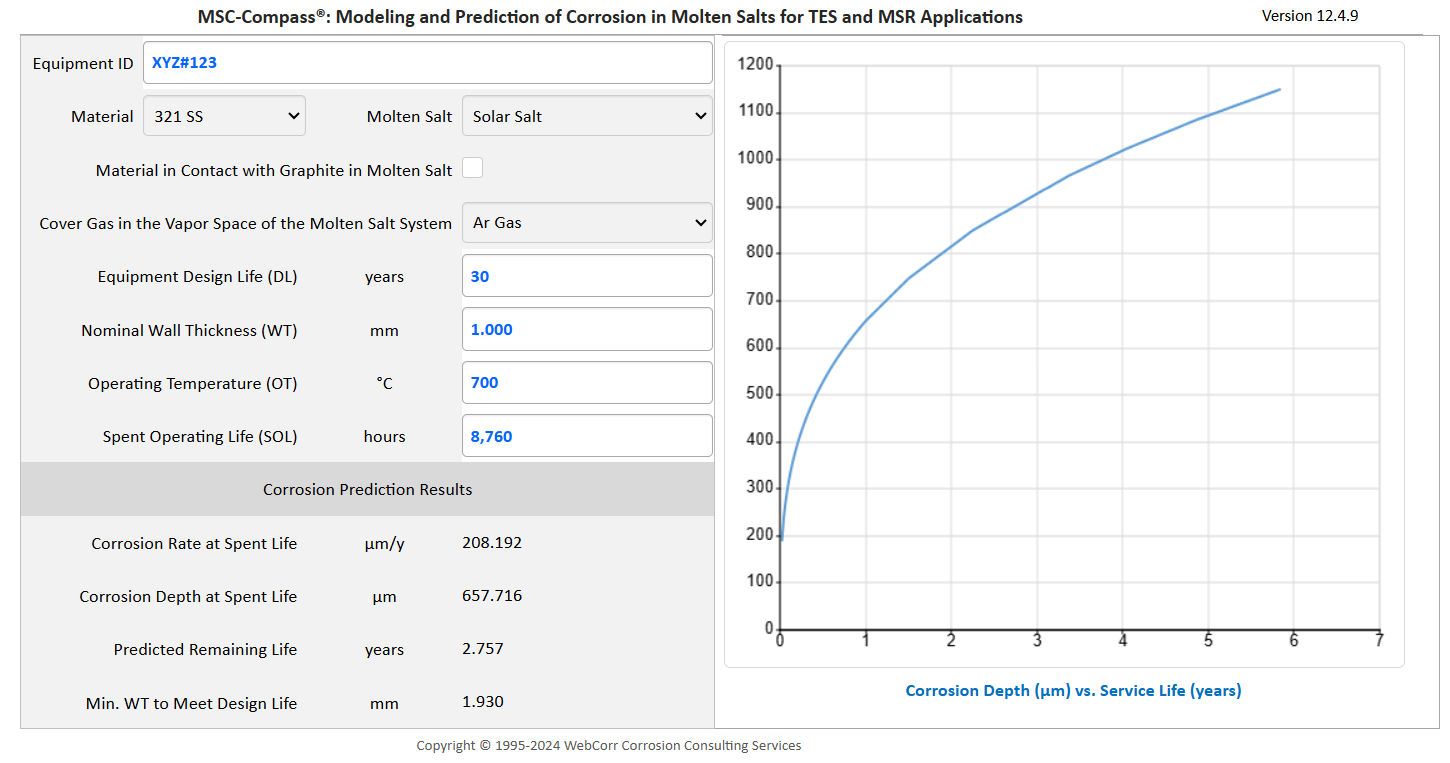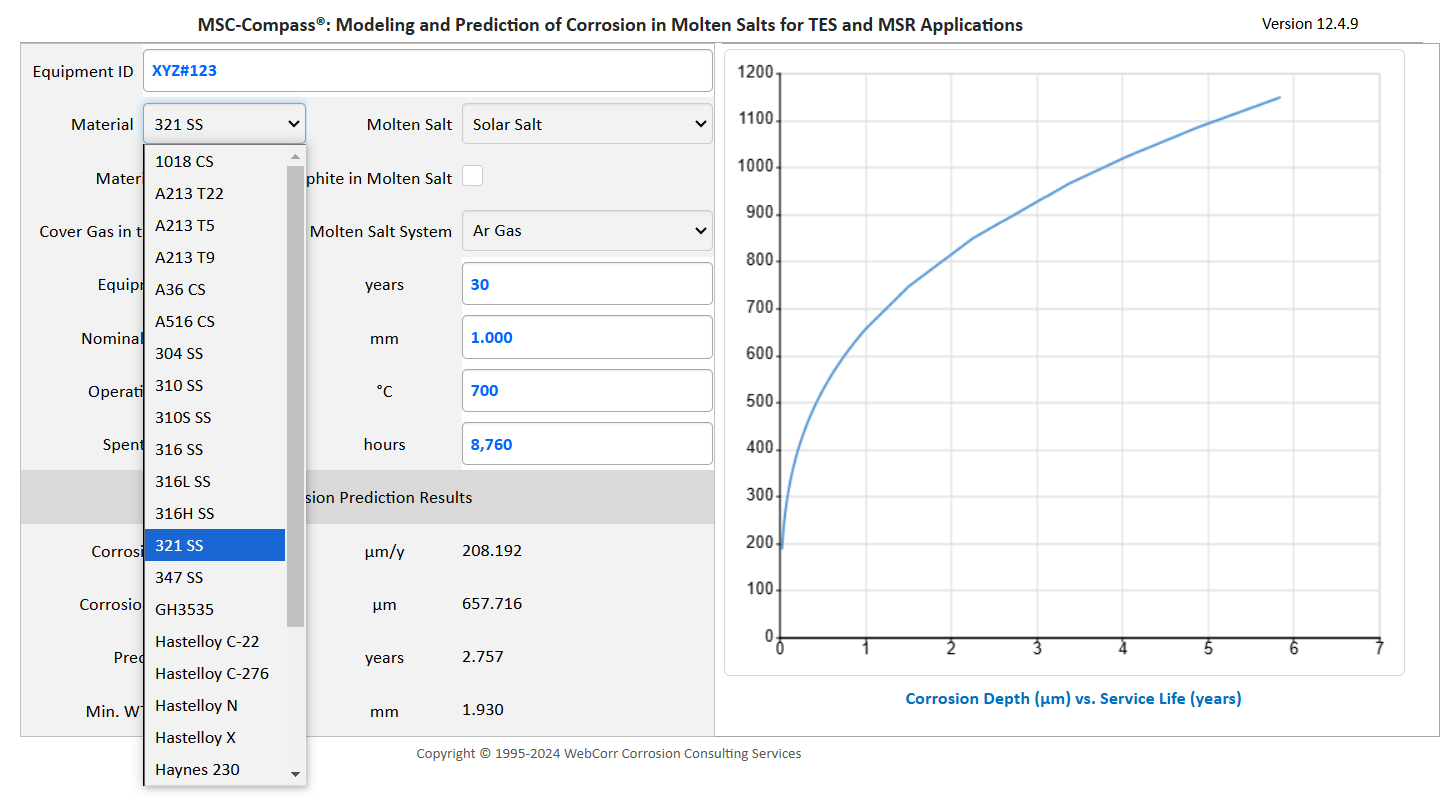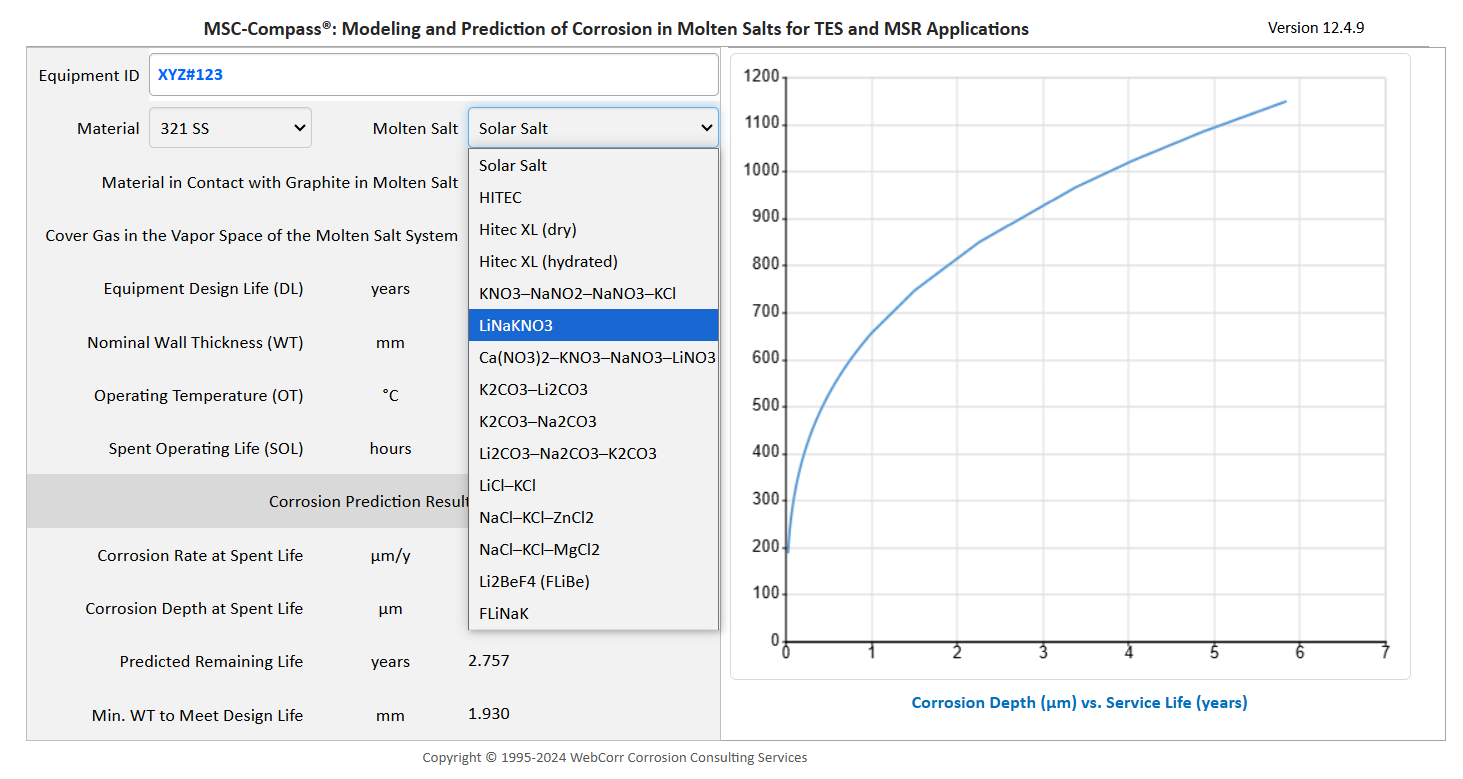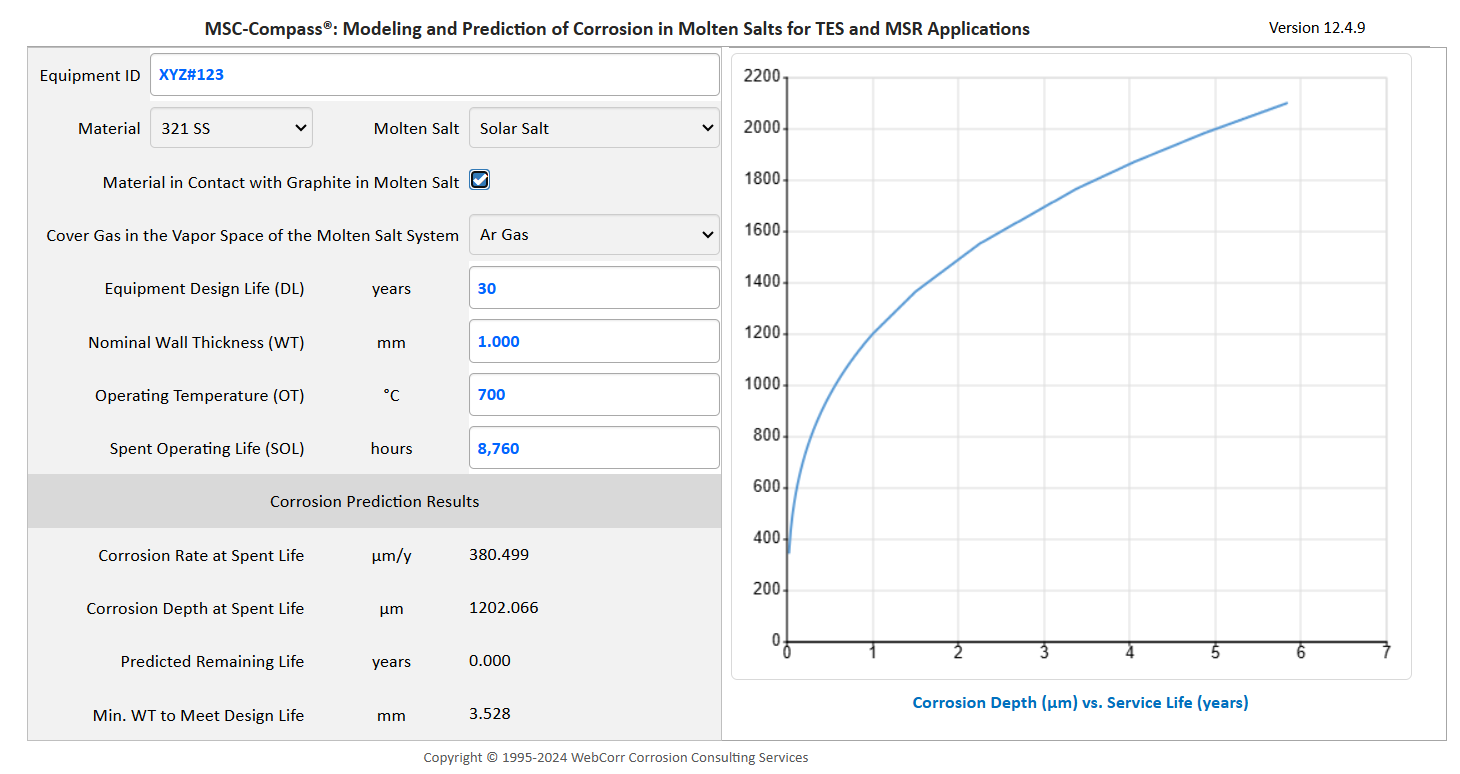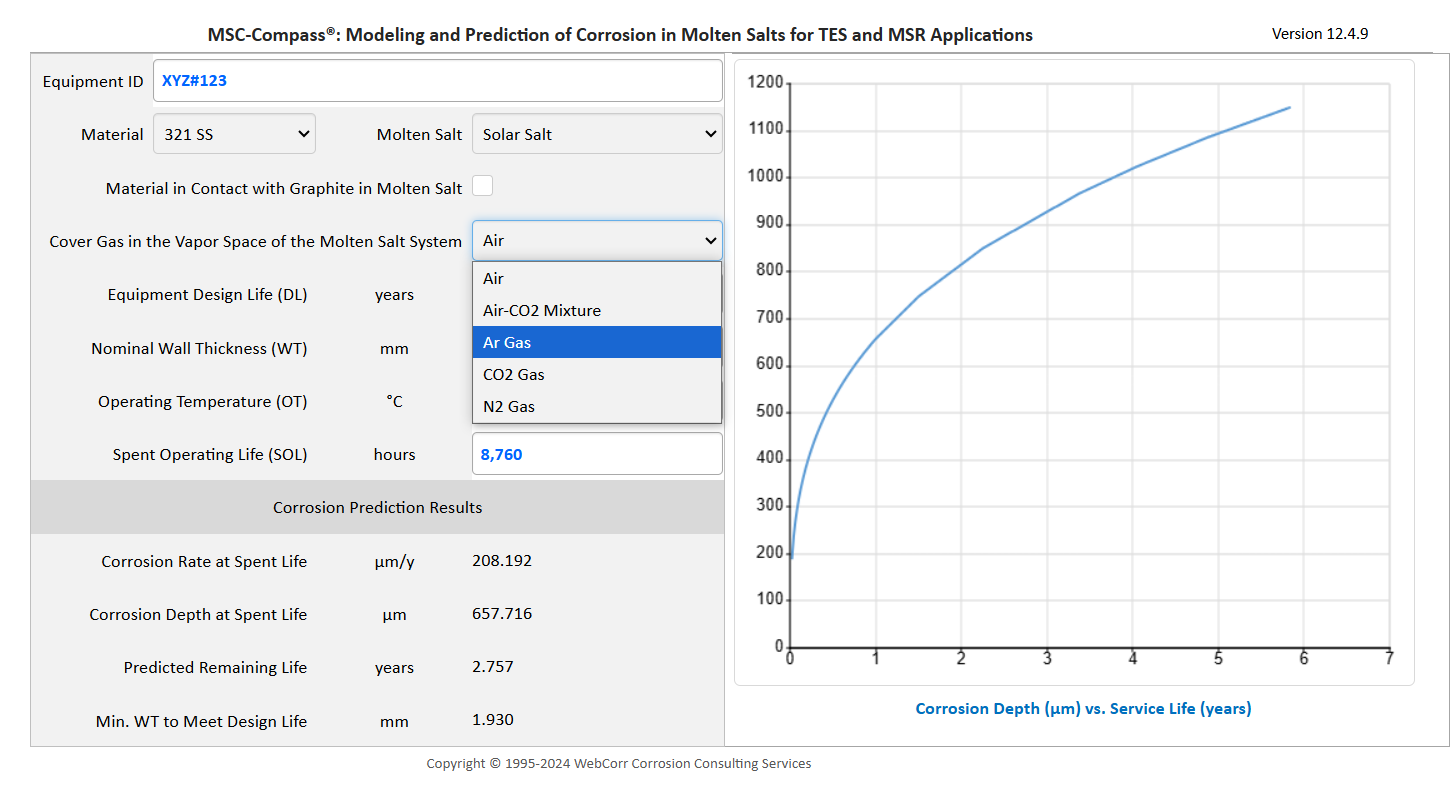|
Home | Consulting | Training | Expert Witness | Failure Analysis | Design Review | Corrosion Test | Corrosion Software | Protective Coatings | Materials Selection | Cathodic Protection | >>> | |
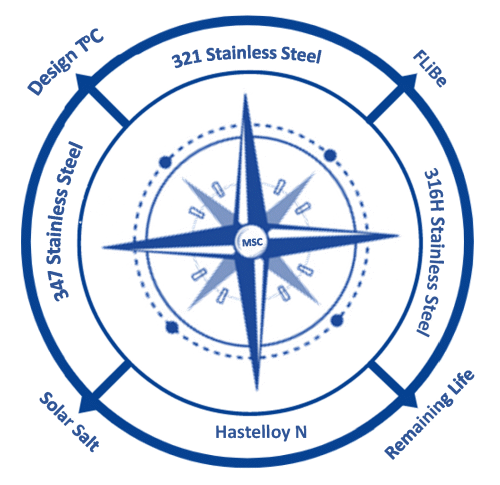 Corrosion Modeling Software and Corrosion Prediction Software Series MSC-Compass®: Modeling and Life Prediction of Corrosion in Molten Salts for TES and MSR Applications
The Effective Software Solutions to Molten Salt Corrosion Version 12.4
Anytime Anywhere Any Device Any OS No USB dongles No installation No Browser Plug-ins
|
|
|
Why WebCorr |
Performance Guarantee |
Unparalleled Functionality |
Unmatched Usability |
Any Device Any OS |
Free Training & Support |
CorrCompass |
|
|
Overview and Application Examples of MSC-Compass Software for Predictive Modeling of Corrosion in Molten Salts for TES and MSR Applications |
|
|
MSC-Compass is the only device and OS independent software tool on the market for the modeling and prediction of corrosion of stainless steels and alloys in various molten salts used in thermal energy storage (TES) and molten salt reactor (MSR) applications. Designers, OEM engineers, consultants, operation personnel, maintenance and inspection engineers can quickly and accurately determine: (1) the corrosion rate of the selected material in the specified molten salt under the prevailing operating condition, (2) the corrosion depth at the spent operating hours, (3) the remaining life or time-to-perforation, (4) the minimum wall thickness required to meet the design life, (5) the effect of galvanic coupling with graphite, and (6) the effect of cover gas in the vapor space of the molten salt system
MSC-Compass is a cloud-based software that works on any device running any OS without the need for users to install or download anything. Figure 1 below shows the user interface of MSC-Compass. Using MSC-Compass is as easy as 1-2-3. (1) Select the the material and the molten salt (2) Enter the design life, wall thickness, the operating temperature, and the spent operating life (3) Review the prediction results
Figure 1 MSC-Compass models and predicts corrosion of stainless steels and alloys in molten salts for TES and MSR applications.
Under the prevailing operating conditions shown in Figure 1 above, the predicted corrosion rate at the spent operating hours for the type 321 stainless steel is 208.192 um/y. The corrosion depth at the spent operating hours is 657.716 um, the remaining life (time-to-perforation) is 2.757 years, the minimum wall thickness to meet the design life of 30 years is 1.930 mm (this can be considered as the corrosion allowance at the design stage). The predicted corrosion depth is also plotted against the exposure time. Figure 2 shows the alloys available for the evaluation and assessment of their resistance to corrosion in various molten salts in TES and MSR applications. The following steels and alloys are included in the software:
1018 CS
Figure 2 MSC-Compass can be used for materials selection for TES and MSR applications.
Figure 3 MSC-Compass is an effective software tool for materials evaluation in various molten salts for TES and MSR applications.
Figure 3 shows the various molten salts commercially available for thermal energy storage and molten salt reactor applications. The following molten salts are included in the software:
Solar Salt
The materials and molten salts databases in the software are updated regularly with more alloys and molten salts added to the lists. If you cannot find the alloy/molten salt of your interest in the lists, do let us know through the Contact Us link and we will conduct the necessary work to add the alloy/molten
salt in the database, free of charge for licensed users of MSC-Compass.
MSC-Compass also models the effect of galvanic coupling with graphite
for the selected alloy. In the presence of galvanic coupling with
graphite shown in Figure 4, the predicted corrosion rate at the spent
operating hours for the type 321 stainless steel is increased from
208.192 um/y (Figure 1) to 380.499 um/y. The corrosion depth at the
spent operating hours is increased from 657.716 um (Figure 1) to
1202.066 um, the remaining life (time-to-perforation) is reduced from
2.757 years (Figure 1) to zero, the minimum wall thickness to meet the
design life of 30 years is increased from 1.930 mm (Figure 1) to 3.528
mm.
Figure 4 MSC-Compass models the effect of galvanic coupling with graphite in molten salt.
Figure 5 MSC-Compass models the effect of cover gas in the vapor space of the molten salt system.
MSC-Compass also models the effect of cover gas in the vapor space of
the molten salt system. The following cover gases are included in the
software:
Air,
Air-CO2 mixture
Ar gas
CO2 gas
N2 Gas
The powerful applications of MSC-Compass are truly unlimited in engineering design, materials selection, process operation, inspection and maintenance, modeling and prediction of corrosion in various molten salts for thermal energy storage and molten salt reactor applications.
Click here to contact us for licensing details and experience the power of MSC-Compass. |
|
MSC-Compass, giving you the right directions in the Modeling and Prediction of Molten Salt Corrosion. |
|
|
Home | Contact Us | PDF |
Copyright © 1995-2025. All rights reserved. |

